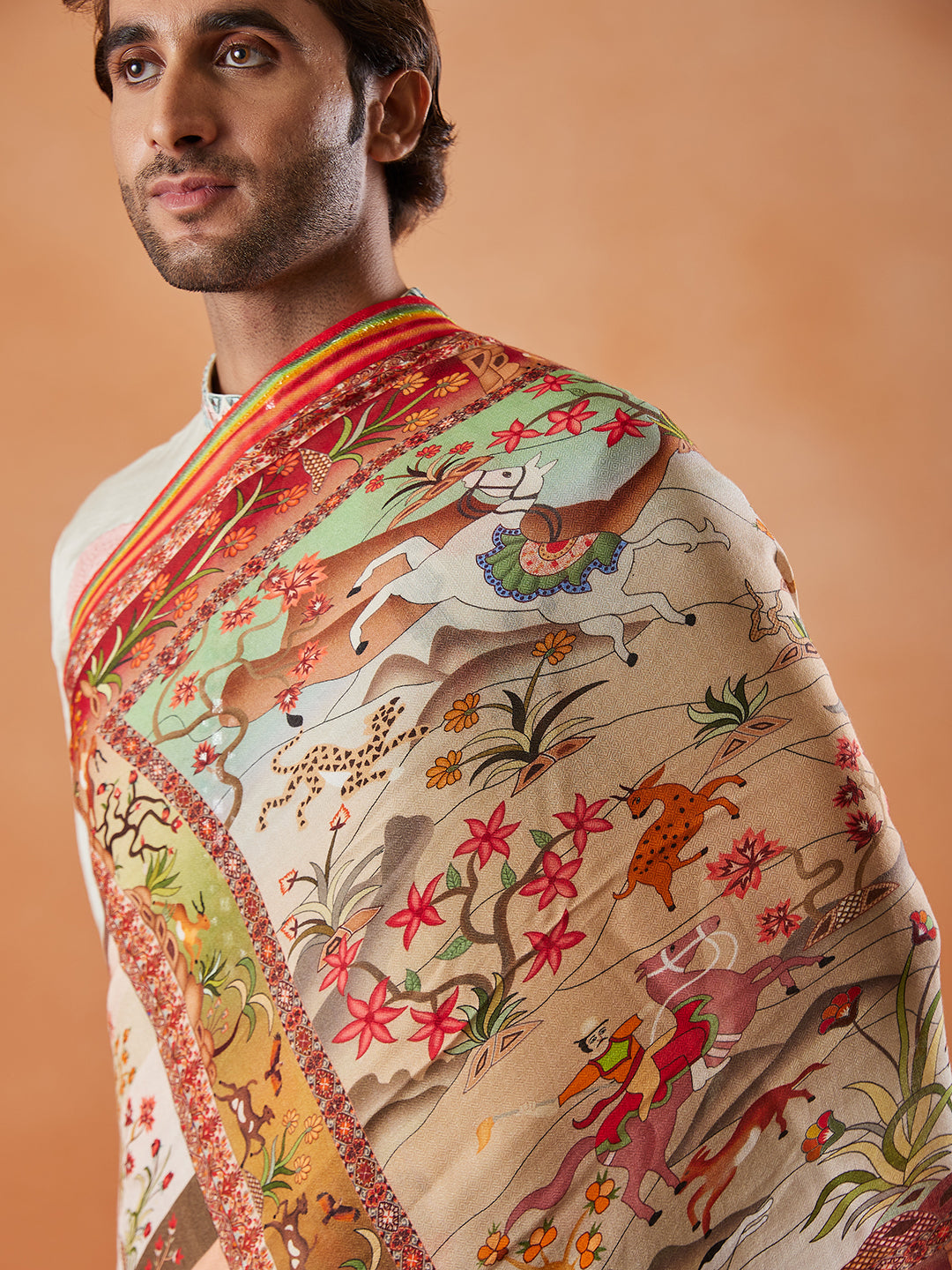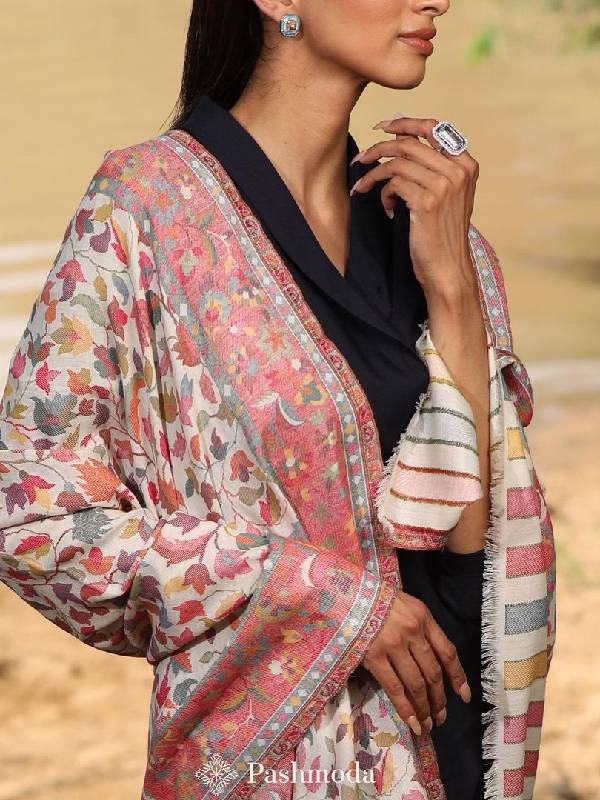Article: What Are Kalamkari Shawls And What Makes Them Unique?

What Are Kalamkari Shawls And What Makes Them Unique?
What Are Kalamkari Shawls And What Makes Them Unique?
Kalamkari is an ancient Indian art form, which is executed by hands using natural dyes and colours with a bamboo brush. In India, this art is usually expressed on shawls commonly in the states of Andhra Pradesh and Telangana. Made from plant-based dyes, they last longer than usual shawls to pass the art form of the hand-painted motifs from generation to generation. Kalamkari can be claimed to be as old as human civilization.
Archeologists have found few remains of fabric rags from the sites of Mohenjo-Daro with Kalamkari art on them, making it possible that the art form has been existing since 3000 B.C. The art form went numerous transformations and took its form as we know of today during the Golconda rule of the Mughals. It was at this time when it found its name Kalamkari and was previously known as Pattachitra popularly.
Kalamkari shawls draw from two primary styles - Srikalahasti and Machilipatnam. Srikalahasti is known for its freehand drawing, usually creating art inspired by the epics, narrating scenes from the Hindu mythology while Machilipatnam is done through intricate hand-carved block printing. Each style contributes distinct characteristics to the shawls. Srikalahasti originated from the need for religious art on a canvas while Machilipatnam originated from the trade mindset in place.
While Srikalahasti Kalamkari appeals to a few people more because it has free-flowing lines and they use storytelling as a tool to narrate art. On the other hand, Machilipatnam uses block prints which makes up for a more precise, cleaner print on the shawls.
Kalamkari shawls are rich in symbolism. As tributes to our gods and religious instruments, they depict mythological figures, floral motifs, and narratives. The artistry tells a story, making each shawl a unique and meaningful creation. Before modernisation of the art form, the shawls were devoted to Hindu gods, scenes from folklores, references from Hindu scriptures and other motifs related to religion. The modern versions of the shawls symbolise nature through peacocks, flowers, paisley patterns, and even geometric designs using blocks.
The choice of colours in Kalamkari shawls are firstly a lesson in sustainability. From the bamboo brush to the plant-based natural dye colours. Each colour used has a symbolic meaning and a motive behind it. If the story is grand, vibrant shades of red are used. If the narrative is sad or serious, earthy tones usually reflect more. Colour itself acts as a symbol for Kalamkari shawls as a lot of thought goes into choosing which colour is to be used in which detail.
The process of creating a Kalamkari shawl, though very detailed and exhausting, is worth the efforts because the result is exquisite. Going through a rigorous 23 step process, the Kalamkari shawl is created by all organic means. The fabric is soaked in buffalo milk and sun-dried, and the art work is executed in parts instead of doing it all at once. The chosen shades from roots, flowers, seeds, and other natural sources are vibrant including the shades of red, green, yellow, and blue.

A Kalamkari pashmina shawl transcend the boundaries of just a fashionable garment. They are culturally significant because they hold fragments of our civilisation in them. Owning a Kalamkari is like owning a piece of our history because they are a form of pure devotion to our gods, narration to our Hindu epics and celebration of humanity. Passing a Kalamkari is like passing a legacy from generations behind us to the next generation.
Any item as delicate as a Kalamkari needs immense care. They shall only be washed in cashmere shampoos and lukewarm water, best suited for natural dyes. They shall not be touched by direct sunlight and must be dried in shade. Even while ironing, one must make sure that it is not touching the iron directly. There must be a cotton cloth between the iron and the shawl or else using a steam iron is advised. Plastic is considered as a spoiler of these sustainable pieces of art. They shall be stored in paper wraps or muslin clothes with naphthalene balls alongside, increasing their longevity.
Authenticity of the Kalamkari shawls one plans to source lies in buying from reputable sellers who value the integrity of the art form. Trusted online platforms offer a curated selection of genuine Kalamkari pieces.
Kalamkari shawls embody our rich artistic heritage, with the craft's name itself reflecting the fusion of 'Kalam' (pen) and 'Kari' (craftsmanship). A blend of tradition and skill, Kalamkari stands as a timeless symbol of elegance and luxury amidst today's fast-paced fashion trends. It serves not only as a cultural treasure but also to support local artisans, preserving our nation's artistic legacy. The shawls, drawn from ancient Indian art, narrate stories through hand-painted motifs, making each piece unique. Kalamkari is a rare art form that needs to be valued more by us, as the world will follow.





